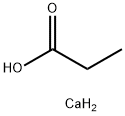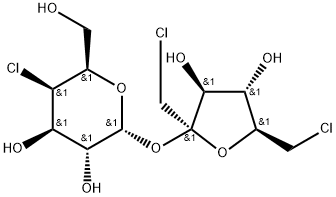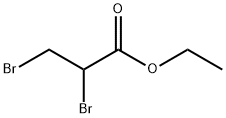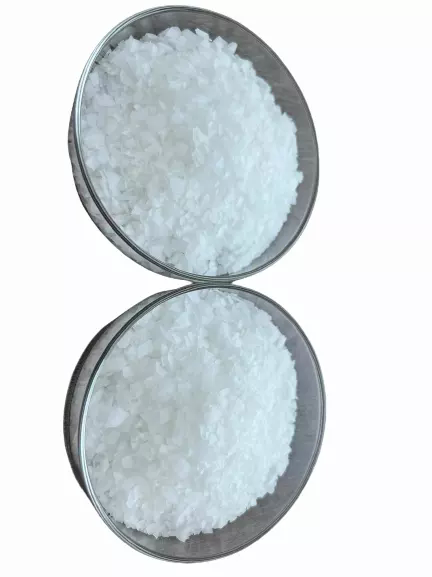Sodium propionate
Synonym(s):Propionic acid sodium salt
- CAS NO.:137-40-6
- Empirical Formula: C3H6O2.Na
- Molecular Weight: 96.06
- MDL number: MFCD00002759
- EINECS: 205-290-4
- SAFETY DATA SHEET (SDS)
- Update Date: 2024-12-26 08:42:27

What is Sodium propionate?
Description
Sodium propanoate or sodium propionate is the sodium salt of propionic acid which has the chemical formula Na(C2H5COO).
Chemical properties
Colourless crystals or, white or almost white powder, slightly hygroscopic.
The Uses of Sodium propionate
Sodium Propionate is an antimicrobial agent that is the sodium salt of propionic acid. it occurs as colorless, transparent crystals or a gran- ular crystalline powder. it is odorless or has a faint acetic–butyric acid odor, and is deliquescent. it is prepared by neutralizing propionic acid with sodium hydroxide. it is used in baked goods; nonalcoholic beverages; cheeses; confections and frostings; gelatins, puddings, and fillings; jams and jellies; meat products; and soft candy.
The Uses of Sodium propionate
Fungicide, mold preventative.
The Uses of Sodium propionate
It is used as a food preservative and is represented by the food labeling E number E281 in Europe; it is used primarily as a mold inhibitor in bakery products. It is approved for use as a food additive in the EU, USA and Australia and New Zealand ( where it is listed by its INS number 281 ) .
Definition
ChEBI: An organic sodium salt comprising equal numbers of sodium and propionate ions.
Reactions
It is produced by the reaction of propionic acid and sodium carbonate or sodium hydroxide.
Flammability and Explosibility
Not classified
Biological Activity
If sodium propionate is ingested or applied topically in an acid media, it becomes propionic acid. It oxidizes fatty acids, lowers pH values, and facilitates the citric acid cycle through interaction with coenzyme A. There has been evidence of heightened production of insulin in cows and sheep; the insulin later settles to an overall lower level. Propionic acid inhibits 14CO2 production from palmitate in both control and methylmalonic fibroblasts; propionic acid also inhibited ureagenesis in rat liver slices. These findings may explain the fatty degeneration of the liver and hyperammonemia in propionic and methylmalonic acidemia. Propionic acidemia is an autosomal recessive disorder caused by a defect of propionyl–coenzyme A carboxylase. The main clinical findings are vomiting, lethargy, hypotonia, and metabolic ketoacidosis, and early clinical onset occurs during the neonatal period in ~80% of the patients.
Biochem/physiol Actions
Sodium propionate has an ability to prevent ketosis in dairy cattle.
Safety Profile
Moderately toxic by skin contact and subcutaneous routes. Mildly toxic by unspecified routes. An allergen. When heated to decomposition it emits toxic fumes of Na2O.
Structure
Anhydrous sodium propionate is a polymeric structure, featuring trigonal prismatic Na+ centers bonded to six oxygen ligands provided by the carboxylates.
Preparation
Sodium propanoate is produced by the reaction of propionic acid and sodium carbonate or sodium hydroxide.
Purification Methods
Recrystallise it from H2O (solubility 10%) and dry by heating at 100o for 4hours. The solubility of the anhydrous salt in MeOH is 13% at 15o and 13.77% at 68o. It is insoluble in *C6H6 and Me2CO. [Henstock J Chem Soc 1341 1934, Beilstein 2 IV 701.]
Mechanism of food preservation
Sodium propionate at levels of 0.1–5.0% delays the growth of Staphylococcus aureus, Sarcina lutea, Proteus vulgaris, Lactobacillus plantarum, Torula and Saccharomyces ellipsoideus by 5 days. The bacteriostatic action of sodium propionate can be overcome by addition of small amounts of β-alanine for Escherichia coli, but not for other organisms such as Aspergillus clavatus, Bacillus subtilis, Pseudomonas spp. and Trichophyton mentagrophytes. It is believed that the inhibitory action of sodium propionate against E. coli may be due to interference with β-alanine synthesis.
Properties of Sodium propionate
| Melting point: | 285-286 °C (lit.) |
| Density | 1.51[at 20℃] |
| vapor pressure | 0Pa at 20℃ |
| storage temp. | Inert atmosphere,Room Temperature |
| solubility | H2O: 0.1 g/mL, clear |
| form | Crystalline Powder |
| color | White |
| Odor | at 100.00?%. bland |
| PH | 8-9.5 (10g/l, H2O, 20℃) |
| Water Solubility | 995 g/L (20 ºC) |
| Sensitive | Hygroscopic |
| Merck | 14,8669 |
| BRN | 3566934 |
| Stability: | Stable. Incompatible with strong oxidizing agents. Hygroscopic. |
| CAS DataBase Reference | 137-40-6(CAS DataBase Reference) |
| NIST Chemistry Reference | Sodium propanoate(137-40-6) |
| EPA Substance Registry System | Sodium propionate (137-40-6) |
Safety information for Sodium propionate
| Signal word | Warning |
| Pictogram(s) |
 Exclamation Mark Irritant GHS07 |
| GHS Hazard Statements |
H319:Serious eye damage/eye irritation |
| Precautionary Statement Codes |
P264:Wash hands thoroughly after handling. P264:Wash skin thouroughly after handling. P280:Wear protective gloves/protective clothing/eye protection/face protection. P305+P351+P338:IF IN EYES: Rinse cautiously with water for several minutes. Remove contact lenses, if present and easy to do. Continuerinsing. P337+P313:IF eye irritation persists: Get medical advice/attention. |
Computed Descriptors for Sodium propionate
Sodium propionate manufacturer
Kronox Lab Sciences Pvt Ltd
Jeevan Chemicals and Pharmaceuticals
West Bengal Chemical Industries Ltd.
Nandu Chemical Industries
Krishna Chemicals
Prakash Chemicals Agencies
Indradhanush Chemicals Pvt Ltd
New Products
Tert-butyl bis(2-chloroethyl)carbamate (S)-3-Aminobutanenitrile hydrochloride N-Boc-D-alaninol N-BOC-D/L-ALANINOL N-octanoyl benzotriazole 3-Morpholino-1-(4-nitrophenyl)-5,6-dihydropyridin- 2(1H)-one Furan-2,5-Dicarboxylic Acid Tropic acid Fmoc-Val-Cit-PAB DIETHYL AMINOMALONATE HYDROCHLORIDE 1,1’-CARBONYLDIIMIDAZOLE R-2-BENZYLOXY PROPIONIC ACID 1,1’-CARBONYLDI (1,2-4 TRIAZOLE) N-METHYL INDAZOLE-3-CARBOXYLIC ACID (2-Hydroxyphenyl)acetonitrile 4-Bromopyrazole 5-BROMO-2CYANO PYRIDINE 5-broMo-2-chloro-N-cyclopentylpyriMidin-4-aMine 2-(Cyanocyclohexyl)acetic acid 4-methoxy-3,5-dinitropyridine 2-aminopropyl benzoate hydrochloride 1-(4-(aminomethyl)benzyl)urea hydrochloride tert-butyl 4- (ureidomethyl)benzylcarbamate diethyl 2-(2-((tertbutoxycarbonyl)amino) ethyl)malonateRelated products of tetrahydrofuran








You may like
-
 Sodium propionate 98%View Details
Sodium propionate 98%View Details -
 Sodium propionate 99%View Details
Sodium propionate 99%View Details -
 Sodium Propionate CAS 137-40-6View Details
Sodium Propionate CAS 137-40-6View Details
137-40-6 -
 Sodium propionate 98% CAS 137-40-6View Details
Sodium propionate 98% CAS 137-40-6View Details
137-40-6 -
 Sodium Propionate CAS 137-40-6View Details
Sodium Propionate CAS 137-40-6View Details
137-40-6 -
 137-40-6 Sodium propionate 98%View Details
137-40-6 Sodium propionate 98%View Details
137-40-6 -
 Sodium propionate CAS 137-40-6View Details
Sodium propionate CAS 137-40-6View Details
137-40-6 -
 Sodium Propionate CAS 137-40-6View Details
Sodium Propionate CAS 137-40-6View Details
137-40-6